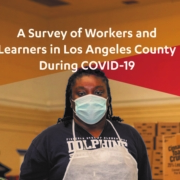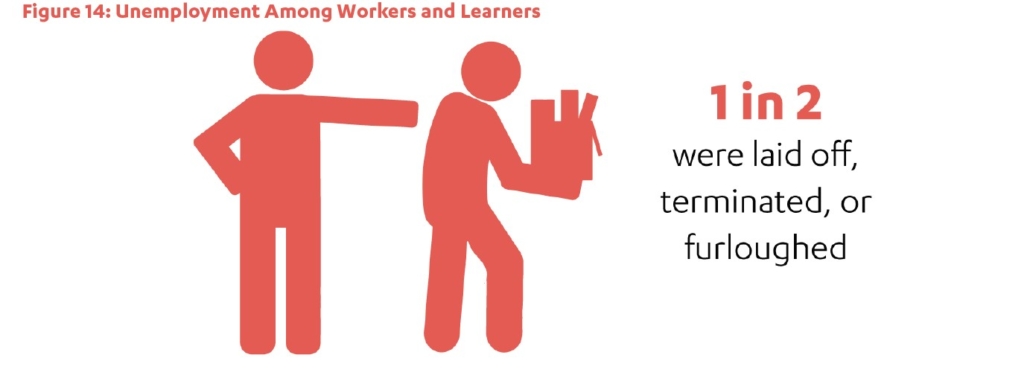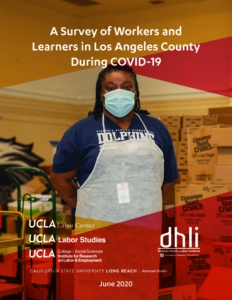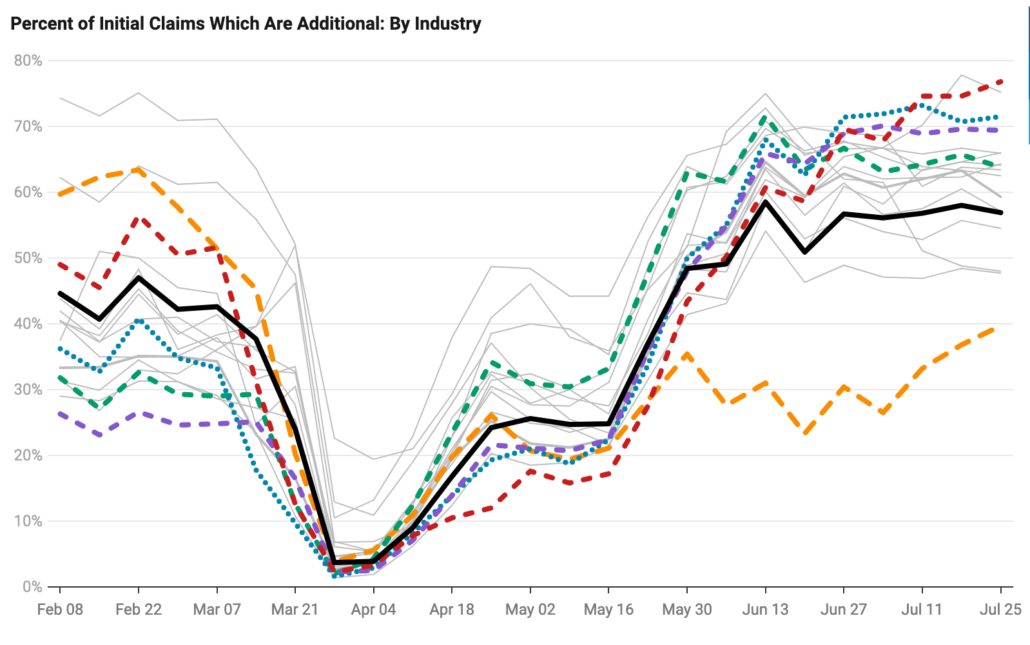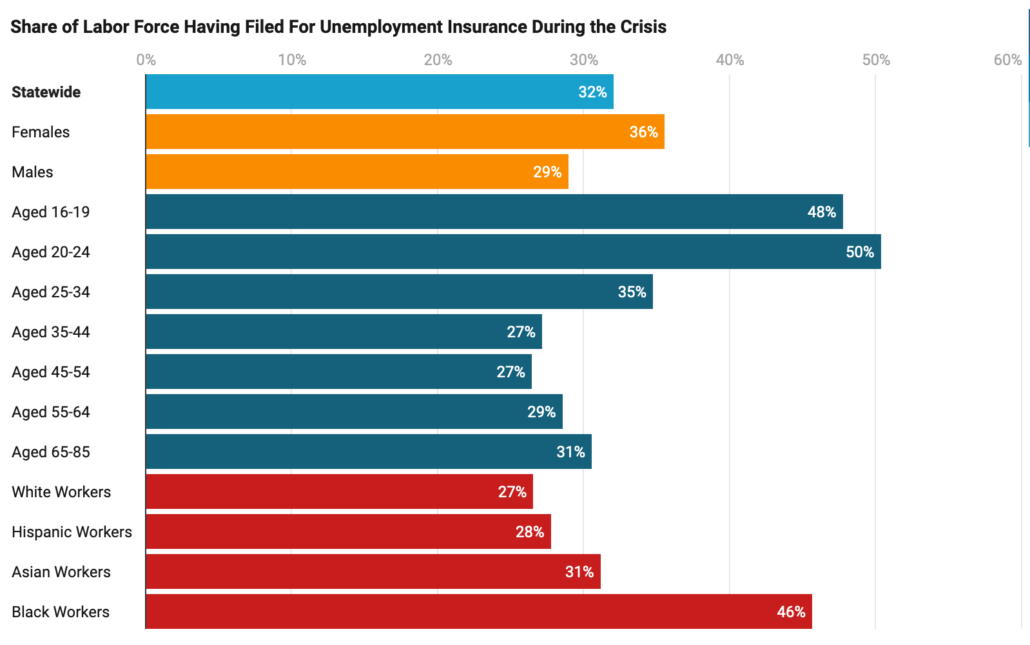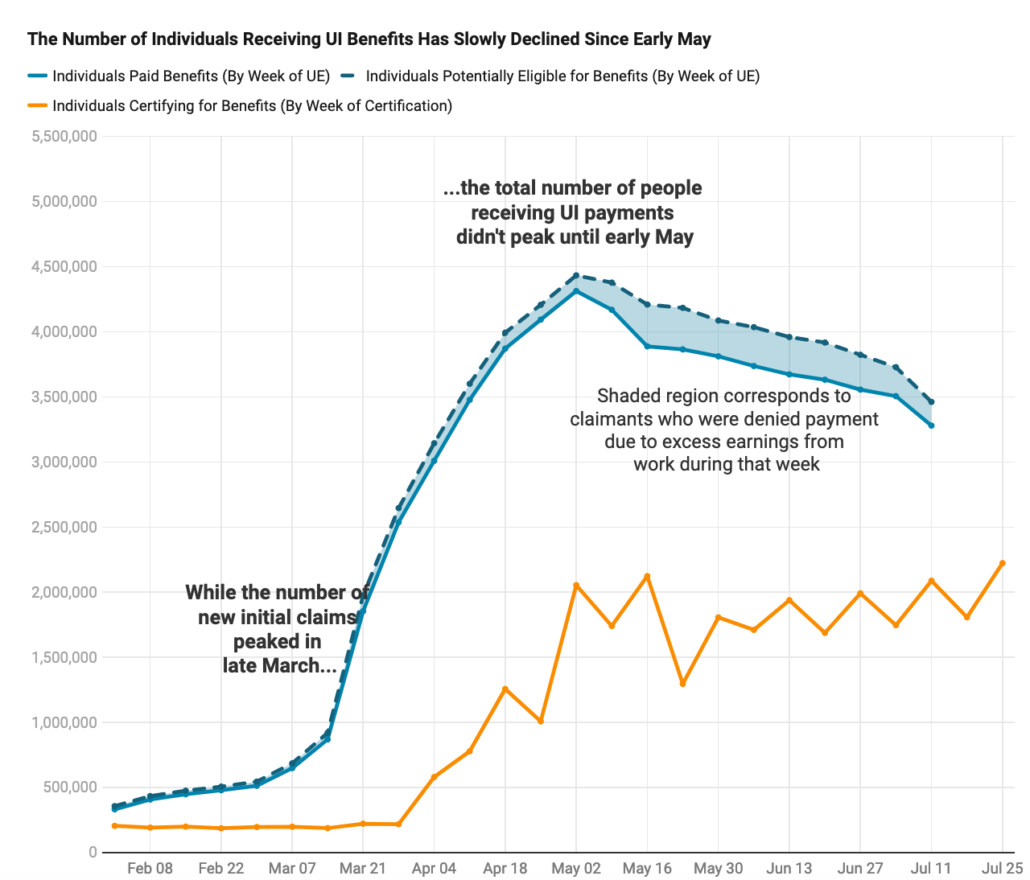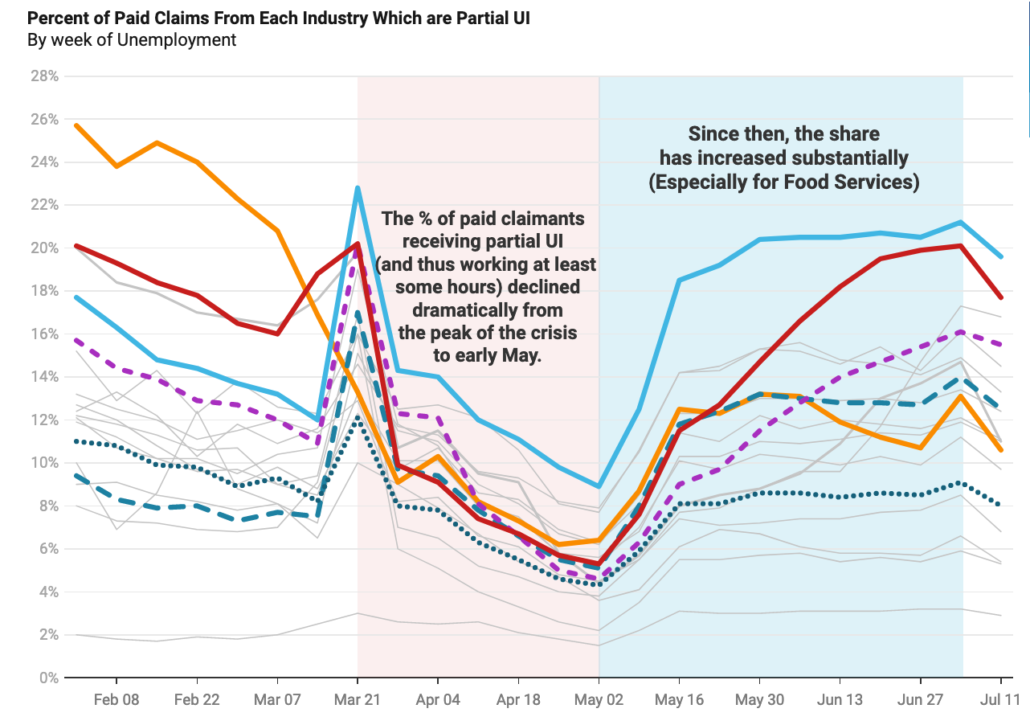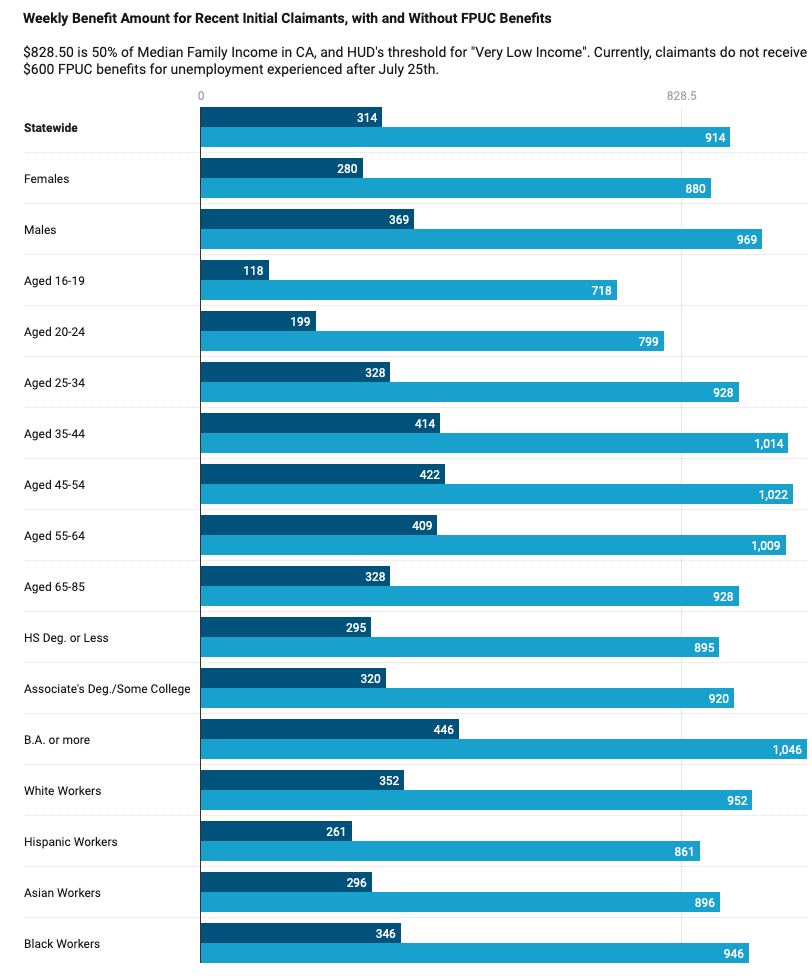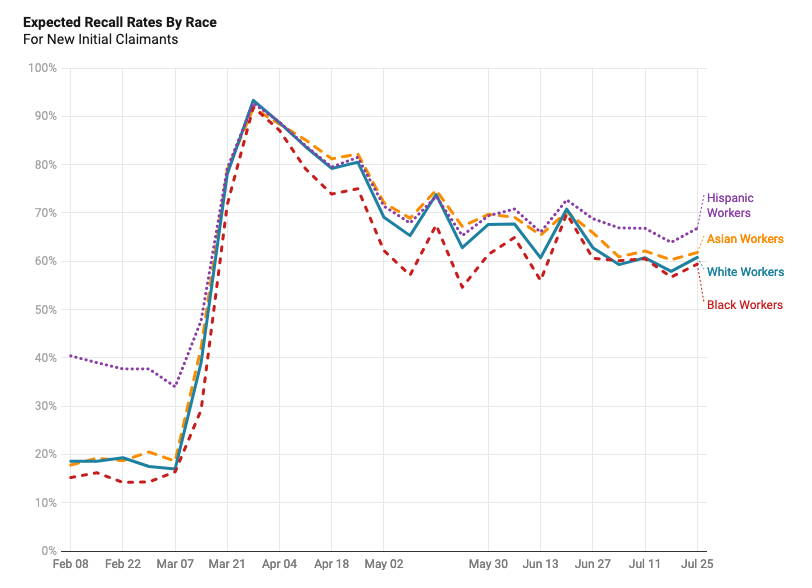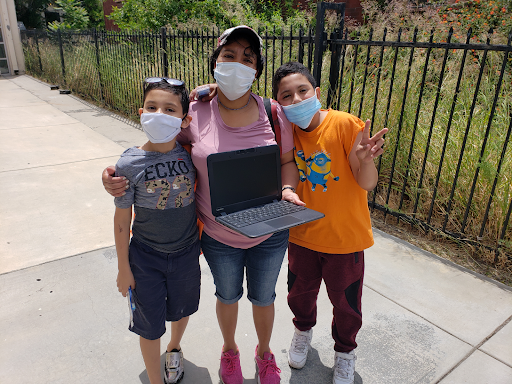
Single-mom and full-time SEIU-USWW Janitor Jenny Meija and her two sons pictured with a computer provided by Building Skills Partnership’s digital equity initiatives.
By Lucy González, Graduate Student Researcher; Sophia L. Ángeles, Graduate Student Researcher; Janna Shadduck-Hernández, Project Director, UCLA Labor Center
There is no doubt the COVID-19 pandemic has had a devastating impact on families. Low-wage essential workers, such as janitors, have been hit particularly hard. The work demands placed on janitors dramatically increased as new safety standards were instated by 2020 COVID-19 protocols. Front-line janitors were at a higher risk of contracting COVID-19, and their families also faced serious financial challenges due to job loss and reduction of work hours. The difficulty of juggling parent-worker responsibilities impacted their well-being and mental health. However, few studies have explored the unique experiences of janitor parents and their critical role in the pandemic.
In the fall of 2021, the UCLA Labor Center conducted 16 interviews with janitor parents who are members of the Building Skills Partnership and SEIU-USWW (Service International Employees Union-United Service Workers West) and have children attending LAUSD schools. The study’s goal was twofold: 1) to understand how changing working conditions affected janitors as parents and workers and 2) to understand how an ever-evolving year of online learning shaped parent workers’ ability to support their children. Preliminary findings point to janitor parents’ resiliency in light of the challenges they encountered.
First, our research team found that the sanitation training janitor parents received in the workplace made them acutely aware and critical of their children’s school sanitary practices. Selene,* a Guatemalan mother of two students, shared her worries after learning that her children were tasked with disinfecting shared spaces. She cited that disinfection practices needed to be performed by professionals on a daily basis. Janitor parents’ access to specialized training equipped them to act as health brokers as they consistently discussed best health practices with their children to keep them safe from COVID-19.
Reflecting nationwide trends, more than half of the janitor parents reported that their children struggled academically. Parents cited the lack of personalized communication and consistent support from teachers and school staff as contributing factors. Iris, a Latina mother of two, shared that she reached out to her daughter’s school counselor for help, but never heard back. She believed this lack of support was due to her Latina ethnicity, as she had received negative responses from school staff when she called speaking Spanish versus the more positive responses she experienced when she spoke English.
Single janitor parents also consistently struggled. Nora, an Honduran single mother of two children with special needs, shared how burnt out she was juggling work and parenting since the start of pandemic:
“As a single mother, how is it going on a daily basis? Very hard. It is very hard because I have to be at 100% … I go to work at 6pm until 2:30am … I sleep for just 3 hours … Then go drop them off … Then I take classes … After, I have to pick up my sons. Then I serve them dinner. Can you imagine? I have no life.”
To support janitor parents, we suggest the following recommendations::
- Provide coordinated support and resources for working parents, particularly single parent households (e.g., flexible childcare options, financial assistance).
- Ensure that school-parent communication is multilingual and through varied and accessible formats.
An article on this research is forthcoming. Read our previous report on the UCLA Labor Center’s programs with worker parents, Learning Together! An Innovative Tutoring Program for Low-Wage Janitor, Garment and Domestic Worker Children (click HERE to download).
Lucy González is a graduate student researcher with the UCLA Labor Center and is a recent MSW graduate. She plans to be a school social worker to work on creating a safe and culturally inclusive school environment for all children.
Sophia L. Ángeles is a graduate student researcher with the UCLA Labor Center’s Worker and Learner project and a PhD candidate in the UCLA School of Education and Information Studies.. Her research focuses on the intersection of immigration and language to examine newcomer youths’ educational experiences and their K–16 trajectories.
Janna Shadduck-Hernández, Ed.D., is a project director at the UCLA Labor Center and teaches for UCLA Labor Studies and the Graduate School of Education and Information Studies. Her research and teaching focus on developing culturally relevant, participatory educational models with first- and second-generation university students, community members, and youth, with a focus on the organizing efforts of low-wage workers to combat labor and workplace violations.
* All names are pseudonyms to protect our participant’s identity.

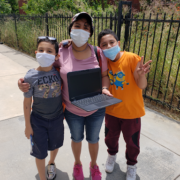
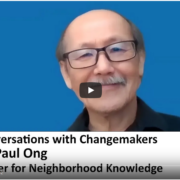
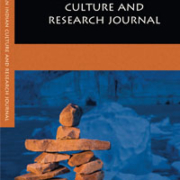

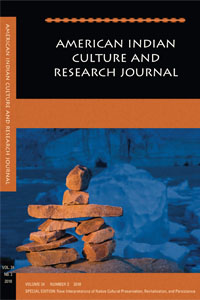
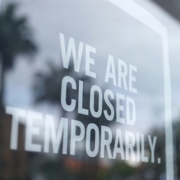
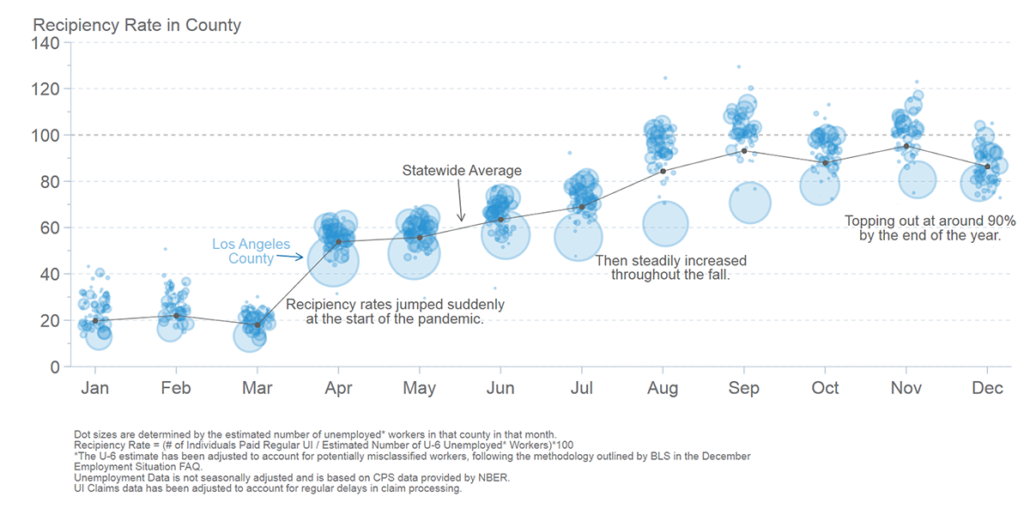

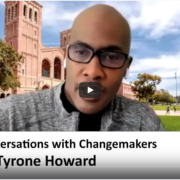



 BBC’s
BBC’s 